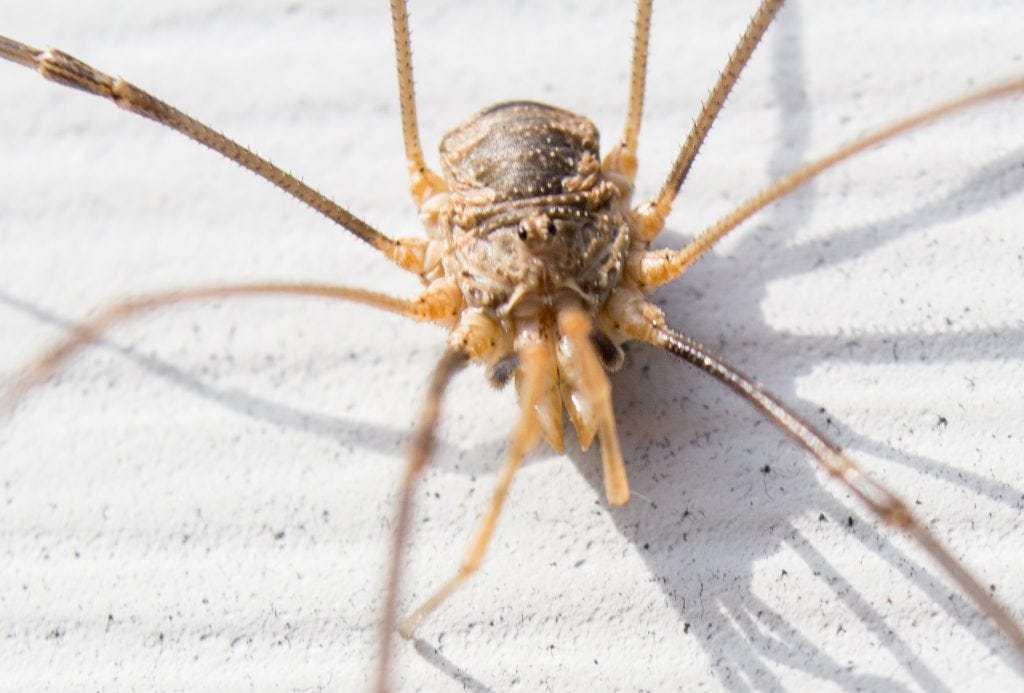Myth-Busting: Daddy Longlegs
As my readers know, I do hang out on FB, with all the pitfalls that entails. I really enjoy the ability to instantly interact with friends and family that live around the globe. It's great for that. But I'm constantly tripping over stuff that is just... not true. Most of the time I just scroll past. I don't have the time to tilt at windmills. But this last week or so, I've run across a couple of things that just made me annoyed beyond reason. So, in a move I know is futile, I'm attempting to correct the myths... The first one concerns one of my favorite little eight-legged creatures. I grew up calling them Daddy Longlegs, the common name they got for the relative length of their long legs to their round little body. It wasn't until later I learned their name is Opiliones, and they aren't a spider at all. More closely related to scorpions, actually. The frequent myth about them is that they are venomous, but their fangs are too small to pierce human skin. When in fact, they are not venomous at all... and can't bite. courtesy of the University of California:
Daddy-longlegs (Opiliones) - these arachnids make their living by eating decomposing vegetative and animal matter although are opportunist predators if they can get away with it. They do not have venom glands, fangs or any other mechanism for chemically subduing their food. Therefore, they do not have poison and, by the powers of logic, cannot be poisonous from venom. Some have defensive secretions that might be poisonous to small animals if ingested. So, for these daddy-long-legs, the tale is clearly false.
Daddy-longlegs spiders (Pholcidae) - Here, the myth is incorrect at least in making claims that have no basis in known facts. There is no reference to any pholcid spider biting a human and causing any detrimental reaction. If these spiders were indeed deadly poisonous but couldn't bite humans, then the only way we would know that they are poisonous is by milking them and injecting the venom into humans. For a variety of reasons including Amnesty International and a humanitarian code of ethics, this research has never been done. Furthermore, there are no toxicological studies testing the lethality of pholcid venom on any mammalian system (this is usually done with mice). Therefore, no information is available on the likely toxic effects of their venom in humans, so the part of the myth about their being especially poisonous is just that: a myth. There is no scientific basis for the supposition that they are deadly poisonous and there is no reason to assume that it is true.
I have to admit to giggling a little while reading that... yeah, that's research that would raise eyebrows.
So the next time you see one of these fascinating creatures, just let it go on doing it's thing. It's not going to bite you - or even try.

The video I saw on the timeline was similar to this one - a nest of hibernating Opiliones. Most people react to these videos with unreasoning panic. This one, usefully, includes the good information about them I've been trying to pass on.
[embed]https://www.youtube.com/watch?v=dNAk6oIKAjI[/embed]




